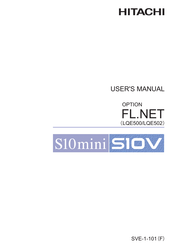User Manuals: Hitachi LQE500 Electrical Equipment
Manuals and User Guides for Hitachi LQE500 Electrical Equipment. We have 1 Hitachi LQE500 Electrical Equipment manual available for free PDF download: User Manual
Hitachi LQE500 User Manual (307 pages)
Option
Brand: Hitachi
|
Category: Industrial Electrical
|
Size: 2.56 MB
Table of Contents
Advertisement
Advertisement
